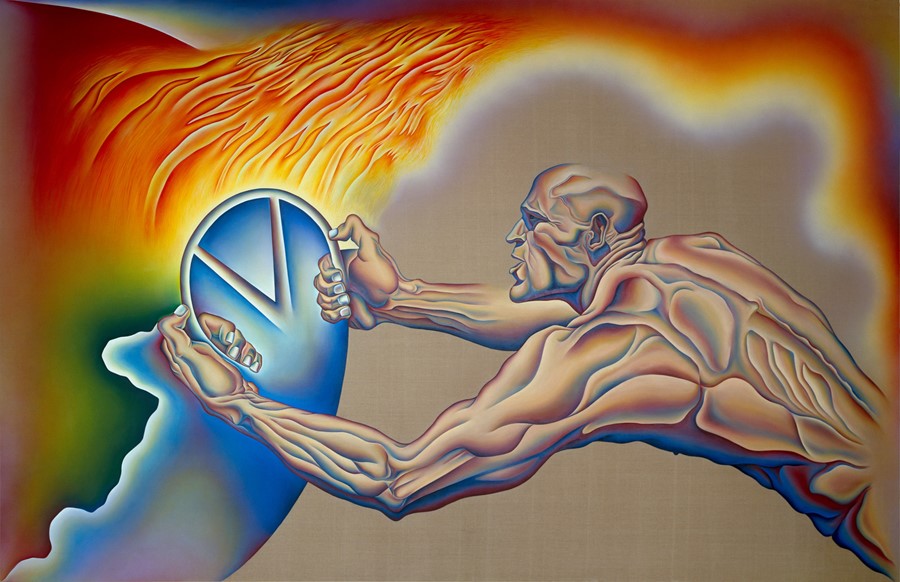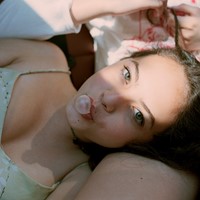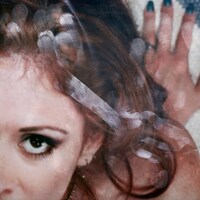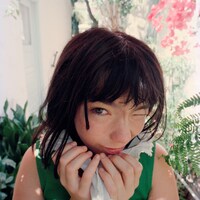For more than half a century, Chicago’s works have tread the boundary of controversy and celebration
Judy Chicago has spent the better part of her career using confrontation and provocation to blow the roof off this place. Born Judith Sylvia Cohen in 1939, the artist announced her new name with a sign posted inside her 1970 exhibition at California State College, Fullerton, that stated: “Judy Gerowitz (her first husband’s name) hereby divests herself of all names imposed upon her through male social dominance and freely chooses her own name Judy Chicago.”
The new surname signalled a change had come, one fuelled by the fires of liberation and self-determination. For the past 50 years, Chicago has been on the front lines for over half a century, calling out sexism, misogyny, and the abuses of the patriarchy – while honouring women who have forged a path through history against the odds.
Now, at the age of 79, Chicago is enjoying a renaissance, beginning with Roots of The Dinner Party: History in the Making at the Brooklyn Museum – a return to her most infamous work, a lightning rod for controversy sure as the day is long. Most recently, Chicago opened two shows in Miami in conjunction with Art Week, including a new exploration of Atmospheres and A Reckoning, a major survey spanning four decades. Here we look back at some Chicago’s most controversial works.
“ATMOSPHERES” (1968-1974)
“It is not unusual for it to take decades for people to understand my work,” Chicago told Dazed last month, as she reflected on the 50th anniversary of her majestic series of landscape installations and performances first staged between 1968 and 1974.
Atmospheres was inspired by the radical land art movement that rejected the growing commercialisation of art – but at the same time, Chicago rejected the destructive practices of male artists like Richard Serra, who laid waste to the environment, much like their colonising forefathers. Instead, Chicago embraced the ethereal feminine she discovered in the mix of colour and smoke, made possible by the study of pyrotechnics.
Yet, being the only woman in a male-dominated world proved to be too much, as Chicago was forced to leave the work for decades after experiencing intense sexual harassment by the owner of the fireworks company where she apprenticed. Fortunately, Chicago has brought Atmospheres back at a turbulent time when we need it most. She will debut a new, site-specific smoke piece, “A Purple Poem for Miami”, in ICA Miami’s sculpture garden on February 23, 2019.
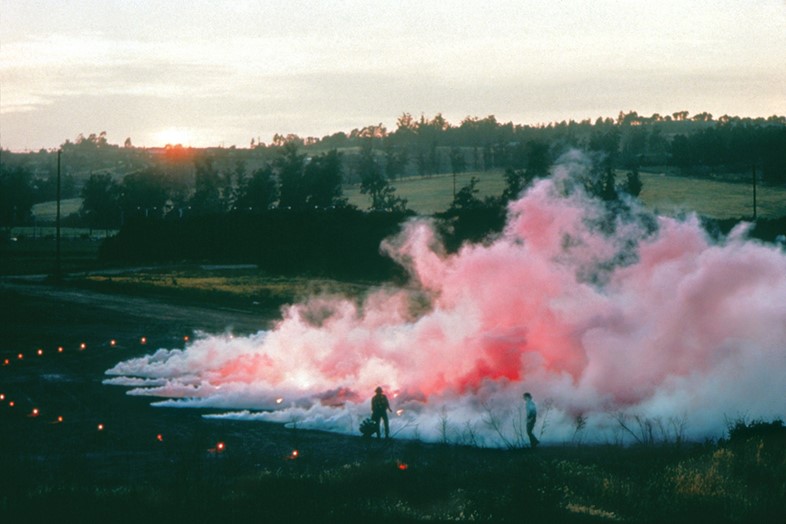
“HEAVEN IS FOR WHITE MEN ONLY” (1973)
Throughout her studies and following her graduation from UCLA, Chicago was marginalised and diminished, her work dismissed. In the 1960s Walter Hopps, director of the Pasadena Museum of Art, refused to look at her sculpture, Rainbow Picket. “I was devastated,” Chicago told the Financial Times.
“Years later, I saw Walter and he tried to excuse his behaviour by stating that in the 1960s women in the art world were either “artists’ wives or groupies” and he didn’t know how to deal with the fact that (as he said to me) my work was stronger than a lot of the men’s.”
By the early 1970s, Chicago was determined to use her work to openly express her experiences as a woman. She began fusing her abstract iconography with the stories she wanted to tell in paintings including “Through the Flower, Let It All Hang Out”, and “Heaven is for White Men Only”, which she executed in sprayed acrylic on canvas. The work evolved into the Great Ladies series, a self-guided study through the erasure of women’s achievements throughout history – which would go on to light the flame of “The Dinner Party”.
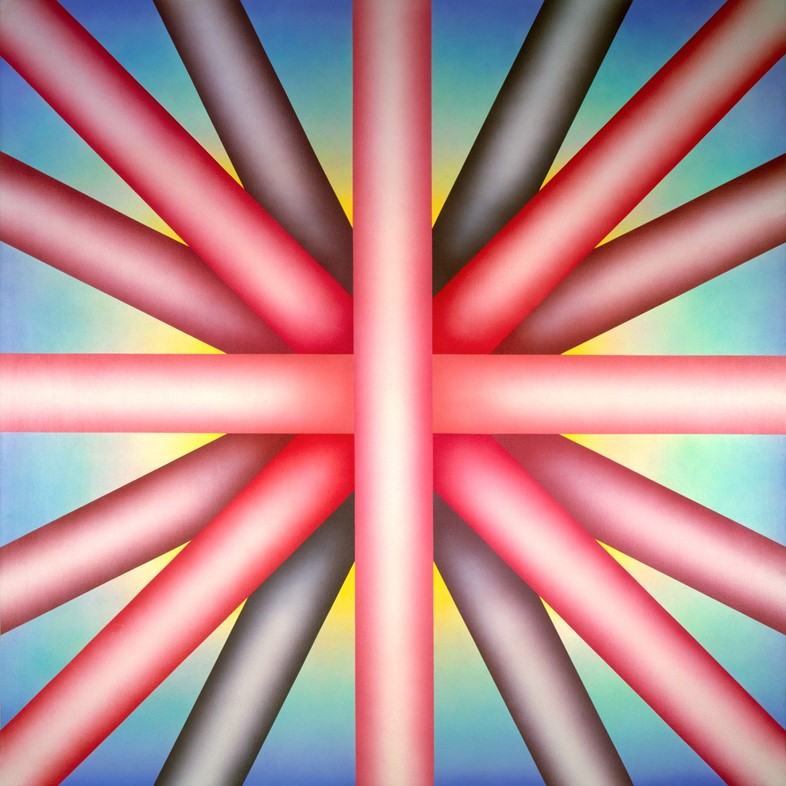
"THE DINNER PARTY" (1979)
When Judy Chicago unveiled “The Dinner Party” in San Francisco in 1979, she turned the art world upside down with the first epic work for the feminist art movement, which took five years to complete. Around an equilateral triangle table, she crafted an elaborate place settings for 39 female figures from the history of western civilisation, beginning with the Primordial Goddess and ending with Georgia O’Keeffe.
For each woman given a seat a the table, a place was set, her name embroidered on a table runner accompanied by symbols of her accomplishments. Then, for the piece de resistance, Chicago served up handmade plates of china, meticulously painted with the main dish: a vulva reminiscent of a flower or a butterfly.
Controversy rained down on the work, with allegations of obscenity following the work for decades. During the height of the Culture Wars, in 1990, the work became the subject of debate in the US House of Representatives after The Washington Times incorrectly reported that the University of the District of Columbia would spend $1.6 million to acquire and exhibit the work.
"(‘The Dinner Party’) is not art, it's pornography," said Rep. Robert K. Dornan (R-Garden Grove, California) said, waving a copy of the false-reported story as proof, while chastising the National Endowment for the Arts for contributing $39,5000 to the project over two decades earlier. Times, as you will soon learn, have not changed much.
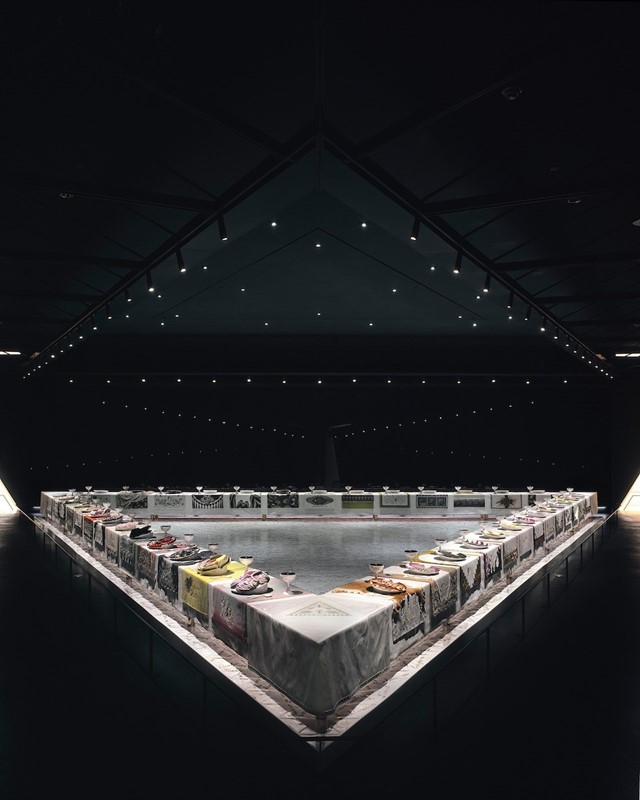
"POWERPLAY" (1982-87)
While working on the Birth Project, Chicago began PowerPlay, a series of works examining the construction of masculinity and the ways in which it has created harmful consequences for both themselves and for the world in works provocatively titled “In the Shadow of the Handgun”, “Driving the World to Destruction”, and “Pissing on Nature”.
“I knew that I didn’t want to keep perpetuating the use of the female body as the repository of so many emotions,” Chicago told art historian Edward Lucie-Smith for Judy Chicago: An American Vision, the first monograph on the artist, which wasn’t published until 2000 – a damning statement on the conservative values of illustrated book publishing.
Chicago continued, “It seemed as if everything – love, dread, longing, loathing, desire, and terror – was projected onto the female by both male and female artists, albeit with often differing perspectives. I wondered what feelings the male body might be made to express. Also, I wanted to understand why men acted so violently.”
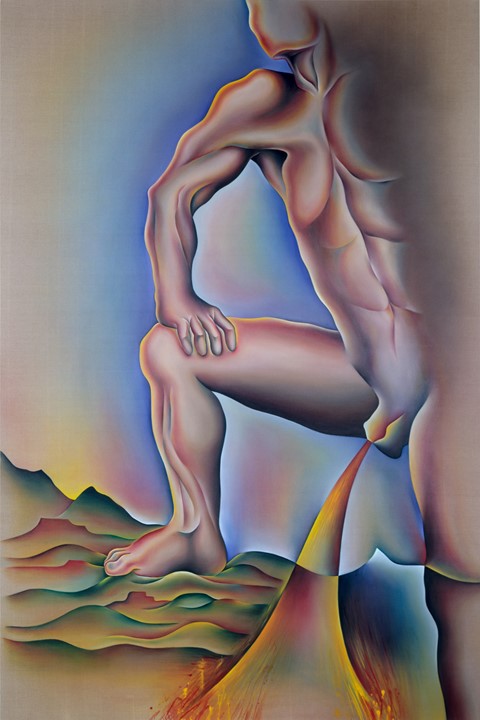
PROPOSED MUSEUM IN BELEN, NEW MEXICO (2018)
Most recently, the proposal for a museum of her work and that of her husband Donald Woodman has polarised the town for Belen, New Mexico, where they have lived since 1996. Mayor Jerah Cordova approached the couple last summer to discuss opening a museum inside a local building owned by Through the Flower, Chicago’s nonprofit organisation.
This October, local clergy and city councilmen brought forth their objections to Chicago’s work, describing it as “pornographic.” Their aversion, aimed at “The Dinner Party” could not be assuaged by the fact that none of the works associated with it are available for use. After another round of objections in November, the board of Through the Flower issued a statement withdrawing participation from the project.
The proposal had “become a lightning rod for many other issues that have nothing to do with art”, Chicago told The Art Newspaper – an apt summary for the forces she has faced for over 50 years as a woman working on her own terms.
Judy Chicago: A Reckoning is on view at the Institute of Contemporary Art, Miami, through April 21, 2019. Judy Chicago: Atmospheres is on view at Nina Johnson in Miami through March 2, 2019
